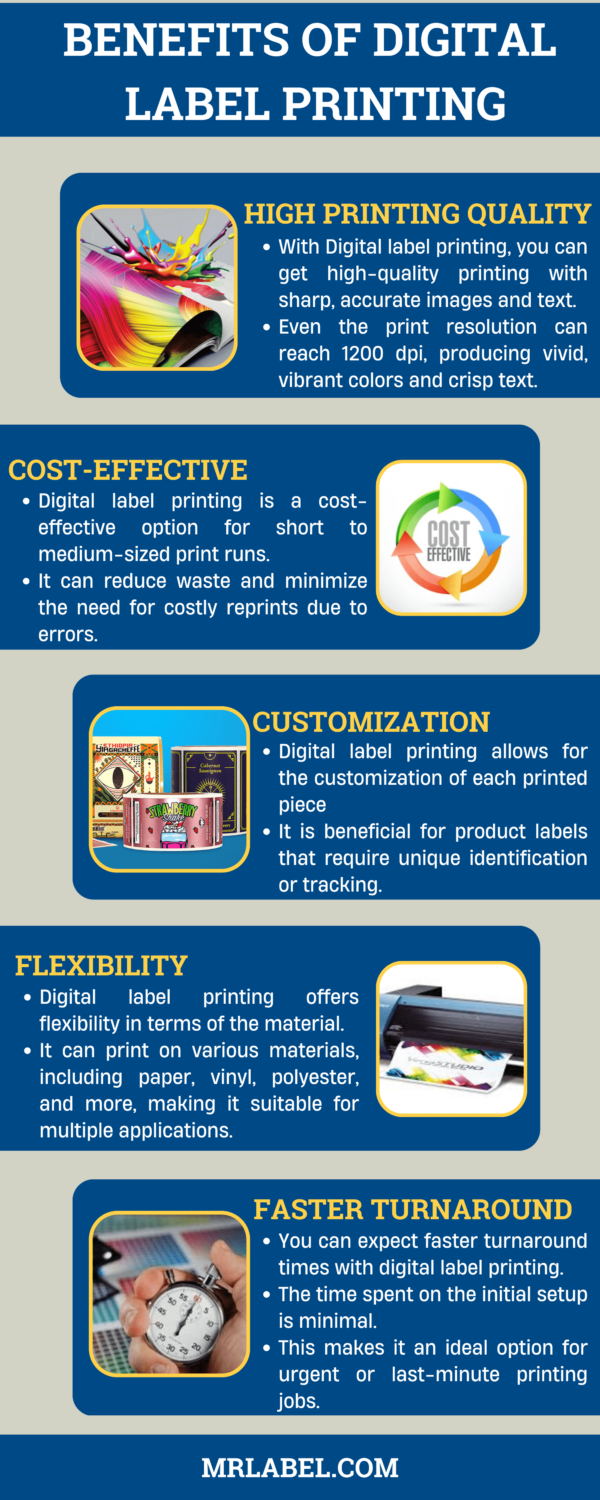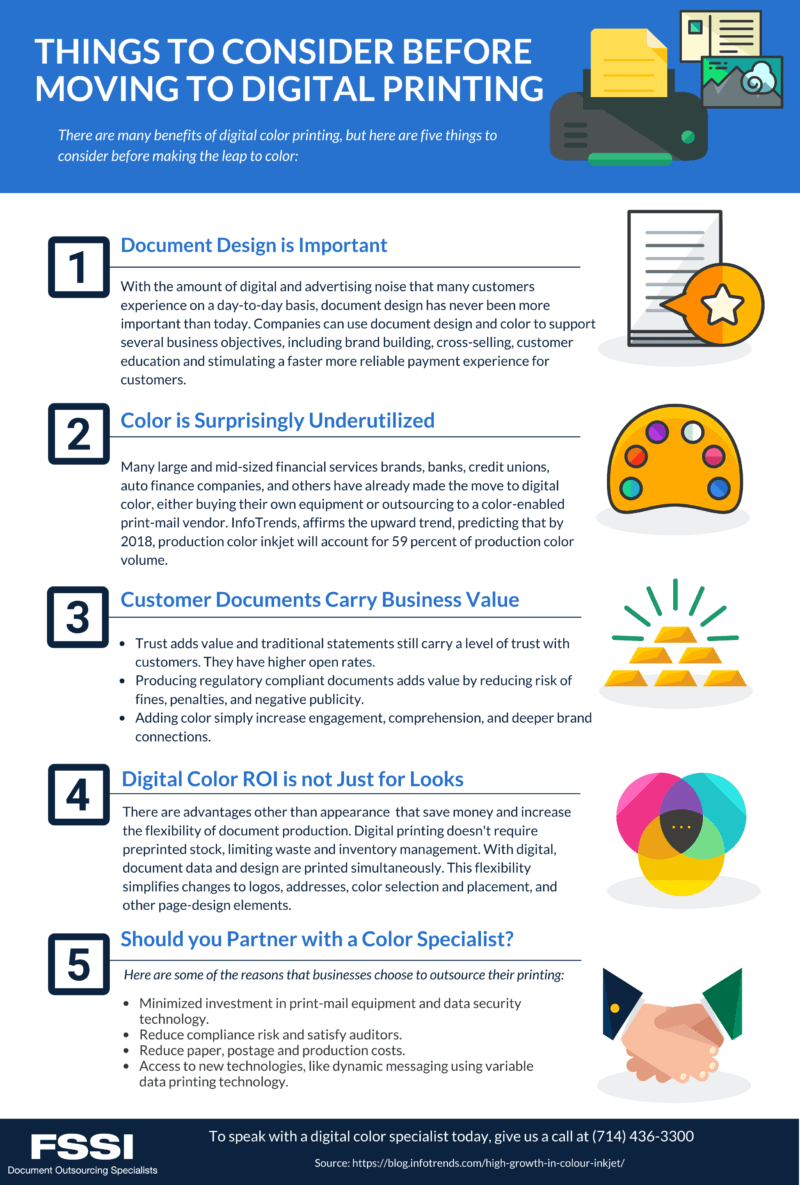The Only Guide for Digital Printing
The Only Guide for Digital Printing
Blog Article
Unknown Facts About Digital Printing
Table of ContentsIndicators on Digital Printing You Need To KnowGet This Report about Digital PrintingNot known Facts About Digital PrintingDigital Printing Can Be Fun For EveryoneIndicators on Digital Printing You Need To KnowSome Ideas on Digital Printing You Should Know
Variable information printing, such as direct mail with customized codes and addresses, is ideally fit for digital printing. Digital quick printing only needs four steps of layout, testimonial, printing and binding to obtain whatever done. Digital quick printing has an exceptional advantage: print on need.According to PMMI, electronic printing allows brand names and suppliers to respond swiftly to consumer demands while boosting the supply chain, lowering warehousing expense and waste, and appreciating faster time to market. That all sounds wonderful, but how does this modern technology do all that? The major differentiator of these technologies is that there are no set up fees and no plates with digital printing.
What Does Digital Printing Mean?
According to Wikipedia, the biggest distinction between digital printing and traditional approaches such as lithography, flexography, gravure, or letterpress - Digital Printing is that there is no demand to replace printing plates in electronic printing, whereas in these analog printing methods the plates are continuously replaced. This leads to quicker turn-around time and lowers price when utilizing digital printing.
Digital printing is very flexible, so it's easy to make adjustments to the bundle layout promptly. It all goes back to the plates.
More inventory can suggest even more waste later on. With standard printing approaches, short-run printing is simply not possible. Because a terrific design can make or break your product, digital printing consistently produces top notch, clear and colorful graphics each time. Digital printing on versatile bags adds the intense, dynamic, and precise graphics that almost bid consumers to get to out and touch them.
Digital printing is the procedure of printing digital-based pictures directly onto a variety of media substrates. There is no demand for a printing plate, unlike with balanced out printing. Digital documents such as PDFs or desktop computer posting data can be sent out directly to the digital printing press to publish theoretically, image paper, canvas, fabric, synthetics, cardstock and various other substratums.
What Does Digital Printing Do?
According to PMMI, electronic printing permits brands and manufacturers to react swiftly to customer demands while boosting the supply chain, lowering warehousing cost and waste, and appreciating faster time to market. That all noises terrific, yet how does this technology do all that? The major differentiator of these innovations is that there are no set up charges and no plates with electronic printing.
According to Wikipedia, the best distinction between digital printing and conventional approaches such as lithography, flexography, gravure, or letterpress is that there is no demand to replace printing plates in digital printing, whereas in these analog printing approaches home plates are repeatedly changed. This results in quicker turnaround time and reduces cost when making use of digital printing.

8 Simple Techniques For Digital Printing
With traditional printing methods, short-run printing is simply not feasible. Because a wonderful layout can make or damage your product, digital printing constantly develops high-grade, clear and vivid graphics each time.

According to PMMI, electronic printing allows brands and makers to respond swiftly to client needs while enhancing the supply chain, decreasing warehousing expense and waste, and delighting in faster time to market. That all sounds terrific, but how does this innovation do all that? The significant differentiator of these technologies is that there are no set-up costs and no plates with digital printing.
Digital Printing for Beginners
According to Wikipedia, the best distinction in between digital printing and conventional techniques such as lithography, flexography, gravure, or letterpress is that there is no requirement to change printing plates in electronic printing, whereas Web Site in these analog printing techniques the plates are consistently changed. This leads to quicker turn-around time and lowers price when using electronic printing.
Digital printing is very versatile, so it's simple to make modifications to the bundle style quickly. It all goes back to the plates.

Rumored Buzz on Digital Printing
Digital printing is the procedure of printing digital-based photos straight onto a range of media substratums. There is no requirement for a printing plate, unlike with balanced out printing. Digital files such as PDFs or desktop computer posting files can be sent find out this here straight to the electronic printing machine to print theoretically, photo paper, canvas, textile, synthetics, cardstock and other substratums.
Report this page